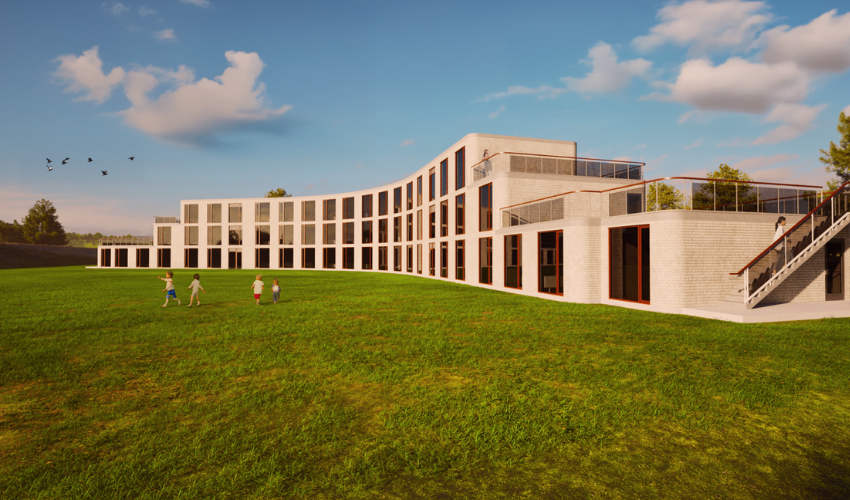Indigenous Housing Project in Canada Uses 3D Construction

Indigenous communities across Canada face one of the country’s most urgent housing crises. Although indigenous people comprise just 5% of Canada’s overall population, they account for 35% of individuals experiencing homelessness, according to a 2020-2022 government report. In response to this growing need, a new collaboration is offering a tech-driven solution. Horizon Legacy, a developer based in Toronto, recently partnered with Two Row Architect, a Native-owned architecture firm, to launch a new 3D printed housing project.
The development will rely on robotic 3D printing to construct the three-story residential complex, which will comprise of up to 30 units for Indigenous communities in need. The project is named ‘Eh ni da se’ which is the Indigenous Cayuga word for “new moon.” This project seeks to blend indigenous values with modern construction innovations. The building is crescent-shaped and will serve as a model for culturally aligned development within Canada.

The moon symbolizes renewal and new beginnings in Cayuga culture.
Brian Porter, a Principal at Two Row Architect, stated, “This partnership is about more than building homes; it’s about claiming our power and sovereignty through innovation and designs that reflect our identity.” For nearly 30 years, Porter’s firm has worked with over 50 different Indigenous communities across North America, helping design spaces for cultural expression and community.
The housing project utilizes Horizon Legacy’s proprietary 3D printing system, called the VAL2.0. The platform includes both the printer and concrete formulation, which allows for on-site printing of multi-story walls. This method is a form of additive manufacturing known as 3D concrete printing or construction 3D printing. Horizon Legacy’s system is already in use at another development in Ganaoque, Ontario, where a 26-home project is expected to be completed this fall. Through this development, there is hope that automation can perhaps meet both housing and labor shortages across the country.

The Val 2.0 will be used to pour a special concrete mix to build the walls.
The funding for the ‘Eh ni da se’ project was made possible with a $3.7 million grant from Next Generation Manufacturing Canada. This is a federal agency that is a part of the Canadian Industry, Science, and Economic Development department. When the project is completed, it will be the largest multi-story Indigenous housing development completed using construction 3D printing. Horizon Legacy’s CEO, Nhung Nguyễn, remarked, “This project demonstrates the power of flexible automation. It proves that robots can create architecturally distinct, culturally meaningful spaces, not just the boxy forms that have come to define prefab housing.”
Aside from these new developments occurring in Canada, there have been similar efforts in Australia. Countour3D, an Australian-based company, is working alongside the Australian Aboriginal Housing Office to print duplexes within New South Wales. This showcases the growth of 3D printing not just with housing projects, but also its applicability to the persistent housing challenges affecting millions across the globe. With the ‘Eh ni da se’ project, the hope is not just to provide shelter for individuals but rather to reshape how Indigenous housing is imagined. Rooted in generations of Indigenous cultural heritage, these designs carry ancient symbolism while also embracing modern construction methods, showcasing the seamless merge between tradition and 3D printing construction.
What are your thoughts on the Canadian ‘Eh ni da se’ project? Let us know in a comment below or on our LinkedIn and Facebook pages! Don’t forget to sign up for our free weekly Newsletter here, the latest 3D printing news straight to your inbox. You can also find all our videos on our YouTube channel.
*All Photo Credits: Horizon Legacy Canada







